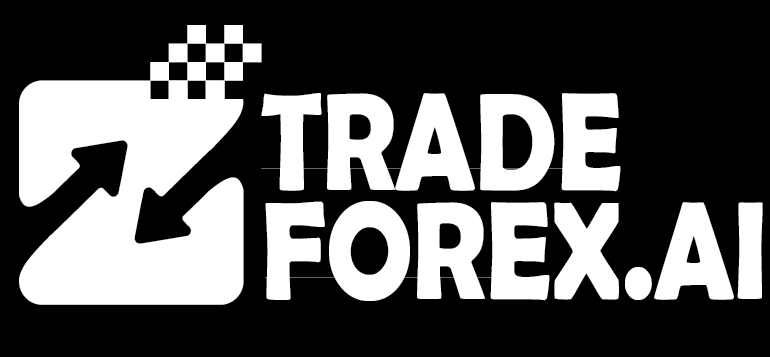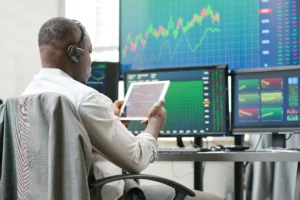Quantitative trading is not just for Wall Street quants and hedge fund pros. In 2025, everyday traders, finance students, and side hustlers are jumping into quantitative trading because it offers a smarter way to chase consistent profits. Instead of just guessing or getting swayed by news, quantitative trading lets you use hard numbers, proven logic, and cutting-edge tech to make trades. This is about as close as you get to levelling the playing field with the pros.
Let’s break down what makes quantitative trading unique, how you can use quant trading strategies that actually work, and why automated trading systems powered by algorithmic trading are the tools every serious trader needs to know. Whether you’re just curious or ready to get your hands dirty, this guide will show you how data-driven trading models are changing the game for everyone.
Why Quantitative Trading Is Everywhere in 2025
What’s the big deal with quantitative trading? It’s all about using numbers and patterns, not just feelings or tips. In a world where headlines change in seconds and market noise is louder than ever, traders who stick to rules and let data drive their decisions have a clear edge.
Think about this: You’re trying to follow dozens of forex pairs or stocks at once. That’s impossible for any one person. But a simple automated trading system can scan thousands of charts in real time, spot trends, and pull the trigger the instant your strategy says so. No more missed trades, no more hesitation.
Even better, data-driven trading models are always objective. If the numbers say yes, the trade goes through. If not, the system does nothing. That’s a relief for anyone who’s ever talked themselves into a bad trade at 2 a.m.
How Quantitative Trading Actually Works
So how does it all happen behind the scenes? Quantitative trading starts with data—lots of it. Prices, volumes, economic releases, even tweets and headlines can be used as raw material. This data gets crunched and cleaned up, then run through data-driven trading models looking for patterns or signals.
Here’s a simple, step-by-step flow:
- Collect historical and live market data from multiple sources.
- Clean the data—get rid of errors and gaps so your results are trustworthy.
- Build models that use math and statistics to identify when to buy or sell.
- Backtest these strategies using old data to see if they would’ve worked in real life.
- Automate the process with code so trades are executed instantly, not manually.
Let’s say you want to trade stocks. You design a quant trading strategy where you buy when a stock closes above its 50-day moving average and sell when it drops below. Backtesting reveals that, over ten years, this simple rule would have outperformed the market. Now, you code this into an automated trading system so you don’t need to sit at your computer all day.
The Big Advantages of Quantitative Trading
Quantitative trading offers advantages you can’t get from “gut feel” alone:
- Emotion-free trading: Models don’t panic, get greedy, or chase losses.
- Speed: Algorithmic trading can spot and react to opportunities in milliseconds.
- Consistency: If a strategy works, it works the same way every time.
- Scale: Automated trading systems can handle dozens of markets and strategies at once.
- Backtesting: You can see if your idea actually worked in the past before risking a dollar.
Here’s a relatable example. Suppose you’re trading the EUR/USD. A data-driven trading model might show you that every time the pair moves 0.5 percent after the European Central Bank speaks, it tends to drift back 0.3 percent within the next hour. You can code this into your algorithmic trading setup and let the system hunt for that pattern day in, day out.
Simple Quant Trading Strategies You Can Use
Quantitative trading doesn’t have to be rocket science. Here are some proven quant trading strategies that many traders use in 2025, with simple explanations and real-world flavour.
Mean Reversion
This strategy bets that prices, after moving away from their average, tend to snap back. If gold usually trades between 1800 and 2000 and suddenly shoots up to 2100 on thin news, a mean reversion strategy might short gold, expecting a pullback toward the mean. Automated trading systems love this because they can scan multiple assets and strike the moment the price stretches too far.
Trend Following
“Don’t fight the trend” is the classic wisdom. Quantitative trading systems make trend following simple. A model might buy when a stock hits a new 30-day high and ride the move up, selling when momentum fades. This approach has powered everything from legendary hedge funds to one-person trading operations.
Statistical Arbitrage
Here’s where the math gets fun. Quantitative trading models can find price discrepancies between two related assets—like crude oil and natural gas—and bet they’ll come back in line. For instance, if oil jumps but gas lags, a quant trading strategy could long gas and short oil, aiming to profit as the gap closes.
Momentum Trading
Momentum quant trading strategies look for assets moving with high speed and strong volume. If a stock rockets 10 percent on strong news and volume, an automated trading system might buy in, expecting the move to continue for a bit longer. In the fast-paced world of 2025, these moves happen often and fast.
Market Making
Market making involves placing buy and sell orders on both sides of a trade, profiting from the small difference in price. Automated trading systems do this on hundreds of stocks and forex pairs, constantly adjusting prices. It’s how modern liquidity is provided, and big players make money minute by minute.
How to Build a Simple Quantitative Trading Model
You don’t need a Ph.D. or fancy gear to build a basic quant model. Here’s a step-by-step way any trader can get started:
- Pick your market: Stocks, forex, crypto, or even commodities.
- Choose a rule-based strategy: For example, buy when the RSI drops below 30 and sell when it rises above 70.
- Gather data: Use your trading platform or free resources like Yahoo Finance.
- Backtest: See if the strategy worked in the past. Most platforms let you do this with a few clicks.
- Automate: Once you trust your strategy, set it up to run as an automated trading system.
Suppose you’re into stocks. You find that a certain pattern, like two green candles after three reds, leads to a price bump 65 percent of the time over five years. You code this into a simple script or use a drag-and-drop builder to automate it. That’s the power of data-driven trading models.
The Role of Algorithmic Trading in Quantitative Strategies
Algorithmic trading is what brings quant strategies to life. These are computer programs—sometimes just a few lines of code, sometimes complex AI—that scan the market and make trades when your rules are met.
By 2025, platforms like MetaTrader, TradingView, and even some brokers’ apps let you build and launch automated trading systems with little or no coding. You can combine several quant trading strategies, run them at the same time, and have each one check different markets or conditions.
Think of algorithmic trading as your tireless assistant, scanning thousands of price ticks, executing orders in milliseconds, and sticking to your plan when emotions would have ruined it.
Many of the world’s top hedge funds, like Renaissance Technologies, are famous for using proprietary data-driven trading models and powerful automated trading systems. While their tech is a well-kept secret, the core concept is the same: gather more data, test more ideas, and let the models do the work.
Keeping Risk in Check with Quantitative Trading
Even the smartest quant trading strategy can lose money if you ignore risk. Successful traders in 2025 don’t just chase profits—they protect capital first.
Key rules every quant trader should follow:
- Always set a stop loss: Every automated trading system should close out trades that go too far against you.
- Limit risk per trade: Never risk more than a small percentage of your capital.
- Backtest thoroughly: Test your quant trading strategies on years of data and on different market conditions.
- Diversify: Don’t rely on just one data-driven trading model. Mix and match different strategies and assets.
Suppose your mean reversion system works well in calm markets but loses money when things get wild. Running a trend-following model at the same time can help smooth out your performance.
Common Mistakes Quantitative Traders Make
Let’s keep it real: no system is perfect. Here are the biggest mistakes new quant traders make—and how to avoid them:
- Overfitting: Tuning your model too closely to past data, so it fails when real markets shift.
- Bad data: Relying on faulty, incomplete, or delayed market data can ruin even the best strategy.
- Lack of supervision: Even automated trading systems need to be checked, especially during major news events or market shocks.
- Failing to adapt: Markets change, so your data-driven trading models need tweaks from time to time.
The best traders stay humble, keep learning, and update their strategies as markets evolve.
Quantitative Trading Trends for 2025
The future is now. In 2025, the edge goes to those who use more data and smarter models. AI and machine learning are being blended into quantitative trading, making data-driven trading models that can learn and adapt as the market shifts.
Algorithmic trading platforms are more user-friendly than ever, with cloud computing giving even retail traders the muscle to run advanced automated trading systems. Alternative data—think social media, satellite images, even weather—is being plugged into quant trading strategies for that extra edge.
A real-world trend: Some quant models in 2025 react to news headlines, Twitter spikes, or even trending hashtags, shifting positions in seconds based on the mood of the market.
How to Start with Quantitative Trading Right Now
You can start quantitative trading today with the right approach. Pick one simple strategy and test it. Learn basic programming if you want to build your own tools or use platforms with built-in automation. Run your quant trading strategy in demo mode first, then go live with small amounts. Track every result, adjust as you learn, and never stop testing new ideas.
Action steps:
- Choose a simple, rule-based strategy.
- Backtest it thoroughly on multiple assets.
- Start automating trades with a trusted platform.
- Monitor performance and adapt to market changes.
Conclusion: Why Quantitative Trading Makes Sense in 2025
Quantitative trading is not magic, but it is powerful. With a mix of clear rules, robust data, and reliable automated trading systems, traders in 2025 are finding ways to pursue consistent profits—while keeping risk in check. Whether you’re building your first model or scaling up to manage multiple quant trading strategies, staying focused on the data, testing everything, and embracing technology is the real edge. In a world of market noise and hype, quant trading offers a way to cut through and focus on what works.
If you want to succeed in today’s fast markets, learn to think like a quant—and let the numbers, not emotions, guide your trades.
Read here to learn more about “Cup and Handle Pattern: Key Signals Every Trader Needs“

I’m Chaitali Sethi — a seasoned financial writer and strategist specializing in Forex trading, market behavior, and trader psychology. With a deep understanding of global markets and economic trends, I simplify complex financial concepts into clear, actionable insights that empower traders at every level. Whether it’s dissecting winning strategies, breaking down market sentiment, or helping traders build the right mindset, my content bridges the gap between information and implementation.




